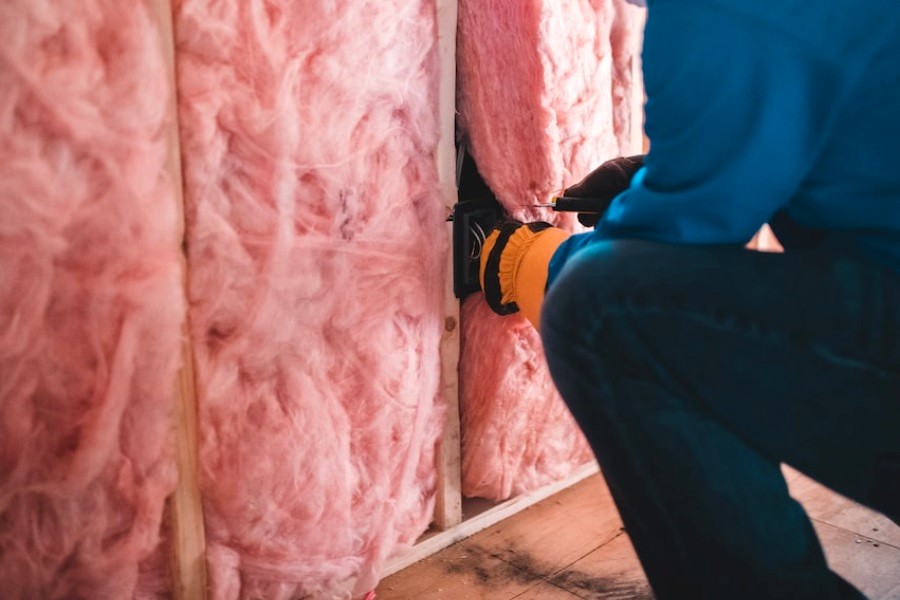
Consider home insulation materials for maintaining warmth and addressing heating or HVAC troubles.
These materials have advanced drastically in current decades as ongoing improvements form the industry.
This blog delves into the sector of staple guns, exploring their critical position in insulation and highlighting pinnacle picks for best effects. It gives insights into staple gun sorts appropriate for insulation, emphasizes the importance of choosing the right tool, and provides performance-primarily based hints.
Amidst this array of options, this article simplifies selection-making to save you future frustrations when you plan to buy insulation online.
Blown-In Insulation
Blown-in insulation, or loose-fill insulation, uses a device to disperse insulation fabric into the centered space. The paper-like fabric usually used in this technique includes fiberglass, rock wool, or cellulose, providing flexibility to suit numerous places, even difficult corners and crevices.
This technique proves best for insulating attics, irregularly shaped regions, and spots that already have insulation but need additional coverage. The R-price of blown-in insulation varies, with fiberglass normally at R-2.2 and cellulose at R-3.Eight.
While it’s a DIY-pleasant undertaking, renting an insulation-blowing system is necessary for the first-class consequences. Alternatively, if you’re looking for expert assistance, it’s recommended for top-quality final results.
Foam Board or Rigid Foam
Foam board and rigid foam insulation boast great sturdiness compared to blanket rolls or batts. Insulation foams are to be had in numerous materials and thicknesses, providing flexible applications throughout your property.
They excel as wall sheathing for indoor and exterior use, as powerful roof insulation, are beneficial in attic hatches, and function properly as foundation insulation at some stage in creation. Rigid foam insulation has three primary types: polyisocyanurate, extruded polystyrene, and expanded polystyrene. Their R-values are consistent, with an inch at about 6.Five-6.8, 5, and 3.Eight, respectively.
Radiant Barrier Insulation
Radiant obstacles, frequently called reflective boundaries, diverge from conventional insulation methods. Instead of diminishing warmth glide from your house, they redirect it by reflecting warmth away. Typically built with a substrate fabric like kraft paper, foam board, or polyethylene, they’re covered with a reflective substance, normally aluminum foil.
Radiant limitations are budget-pleasant and DIY-pleasant, especially powerful inside the attics and garages of houses in hotter climates. It’s important to note that this insulation technique is not evaluated using the R-value device.
Vapor Barrier Insulation
Vapor limitations play a crucial function in blocking off the movement of water vapor through your own home’s ceilings and partitions during a bloodless climate. Even with a current insulation gadget, moisture can collect around and within it, diminishing the insulation’s R-value.
Typically composed of vast sheets made from plastic or foil, vapor obstacles effectively curtail moisture penetration through insulation. This machine is value-effective and appropriate for DIY installation. It’s particularly beneficial for houses in humid climates with cold temperatures. Please notice that its performance isn’t always assessed by using the R-price dimension.
Insulated Concrete Forms
Insulated concrete forms (ICFs) are innovative H-shaped constructions comprising two concrete partitions sandwiching insulation layers. This layout creates an enclosed air channel among the two walls, resulting in mind-blowing thermal resistance, often reaching as much as R-20.
ICFs offer a top-notch solution for constructing strength-green homes appropriate for various purposes, consisting of residential, commercial, and industrial systems. Despite being barely wider, ICF partitions intently resemble historically built walls.
The framework is fortified with metal bars. When the structural guide does not demand additional concrete or metallic, it is possible to decorate the insulation by growing the R-fee.
Start Considering Home Insulation
There isn’t any one-length-fits-all answer when selecting the best insulation. Each insulation shape has advantages and drawbacks, and their suitability depends on various factors. The final desire for your house hinges on elements like your region, the areas of the house you need to insulate, your budget, and whether your private home is underneath construction or already built.
Common insulation substances encompass fiberglass, foam, and cellulose, while famous insulation types encompass batts, free-fill, inflexible foams, and spray foam. However, the top-of-the-line desire is your unique requirements and possibilities.
- Atlanta: Yoba, Carter, McKinney And More Celebrate South Fulton’s Global South’s Film Festival 2024
- Jean Shafiroff Hosts Holiday Cocktail Reception In Support Of The Mission Society Of New York City
- Paddles And Pedigree: Unraveling The Storied Legacy Of Rowing In West Harlem
- Harlem Legendary Composer, Will Marion Cook, Who Mentored Eubie Blake And Duke Ellington,1869 – 1944
- Style Your Look With Cat-Eye Sunglasses: Unbeatable Black Friday Sunglasses Sales
Become a Harlem Insider!
By submitting this form, you are consenting to receive marketing emails from: . You can revoke your consent to receive emails at any time by using the SafeUnsubscribe® link, found at the bottom of every email. Emails are serviced by Constant Contact









